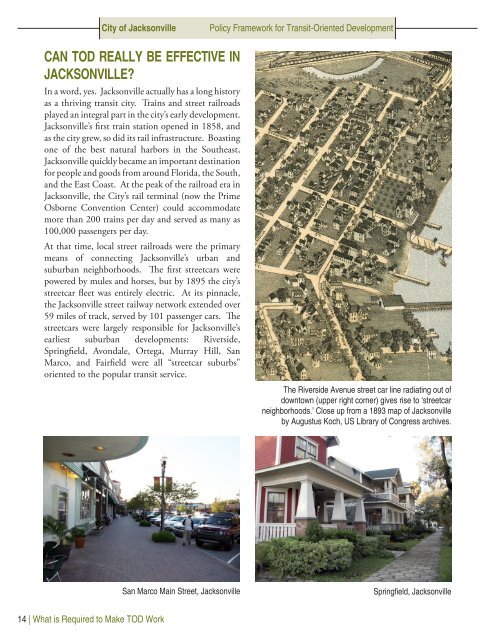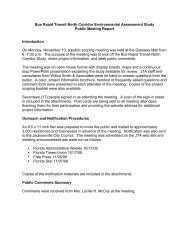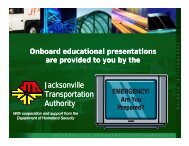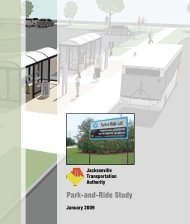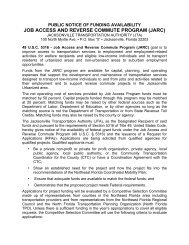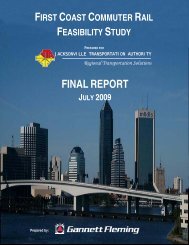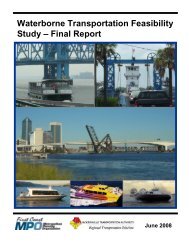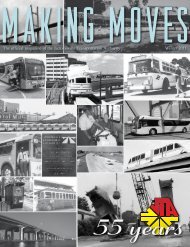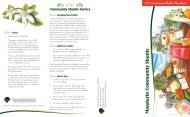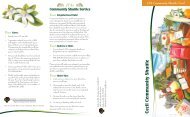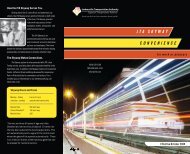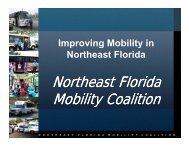Policy Framework - Jacksonville Transportation Authority
Policy Framework - Jacksonville Transportation Authority
Policy Framework - Jacksonville Transportation Authority
Create successful ePaper yourself
Turn your PDF publications into a flip-book with our unique Google optimized e-Paper software.
City of <strong>Jacksonville</strong><br />
<strong>Policy</strong> <strong>Framework</strong> for Transit-Oriented Development<br />
Can TOD Really Be Effective in<br />
<strong>Jacksonville</strong>?<br />
In a word, yes. <strong>Jacksonville</strong> actually has a long history<br />
as a thriving transit city. Trains and street railroads<br />
played an integral part in the city’s early development.<br />
<strong>Jacksonville</strong>’s first train station opened in 1858, and<br />
as the city grew, so did its rail infrastructure. Boasting<br />
one of the best natural harbors in the Southeast,<br />
<strong>Jacksonville</strong> quickly became an important destination<br />
for people and goods from around Florida, the South,<br />
and the East Coast. At the peak of the railroad era in<br />
<strong>Jacksonville</strong>, the City’s rail terminal (now the Prime<br />
Osborne Convention Center) could accommodate<br />
more than 200 trains per day and served as many as<br />
100,000 passengers per day.<br />
At that time, local street railroads were the primary<br />
means of connecting <strong>Jacksonville</strong>’s urban and<br />
suburban neighborhoods. The first streetcars were<br />
powered by mules and horses, but by 1895 the city’s<br />
streetcar fleet was entirely electric. At its pinnacle,<br />
the <strong>Jacksonville</strong> street railway network extended over<br />
59 miles of track, served by 101 passenger cars. The<br />
streetcars were largely responsible for <strong>Jacksonville</strong>’s<br />
earliest suburban developments: Riverside,<br />
Springfield, Avondale, Ortega, Murray Hill, San<br />
Marco, and Fairfield were all “streetcar suburbs”<br />
oriented to the popular transit service.<br />
The Riverside Avenue street car line radiating out of<br />
downtown (upper right corner) gives rise to ‘streetcar<br />
neighborhoods.’ Close up from a 1893 map of <strong>Jacksonville</strong><br />
by Augustus Koch, US Library of Congress archives.<br />
San Marco Main Street, <strong>Jacksonville</strong><br />
Springfield, <strong>Jacksonville</strong><br />
14 | What is Required to Make TOD Work


